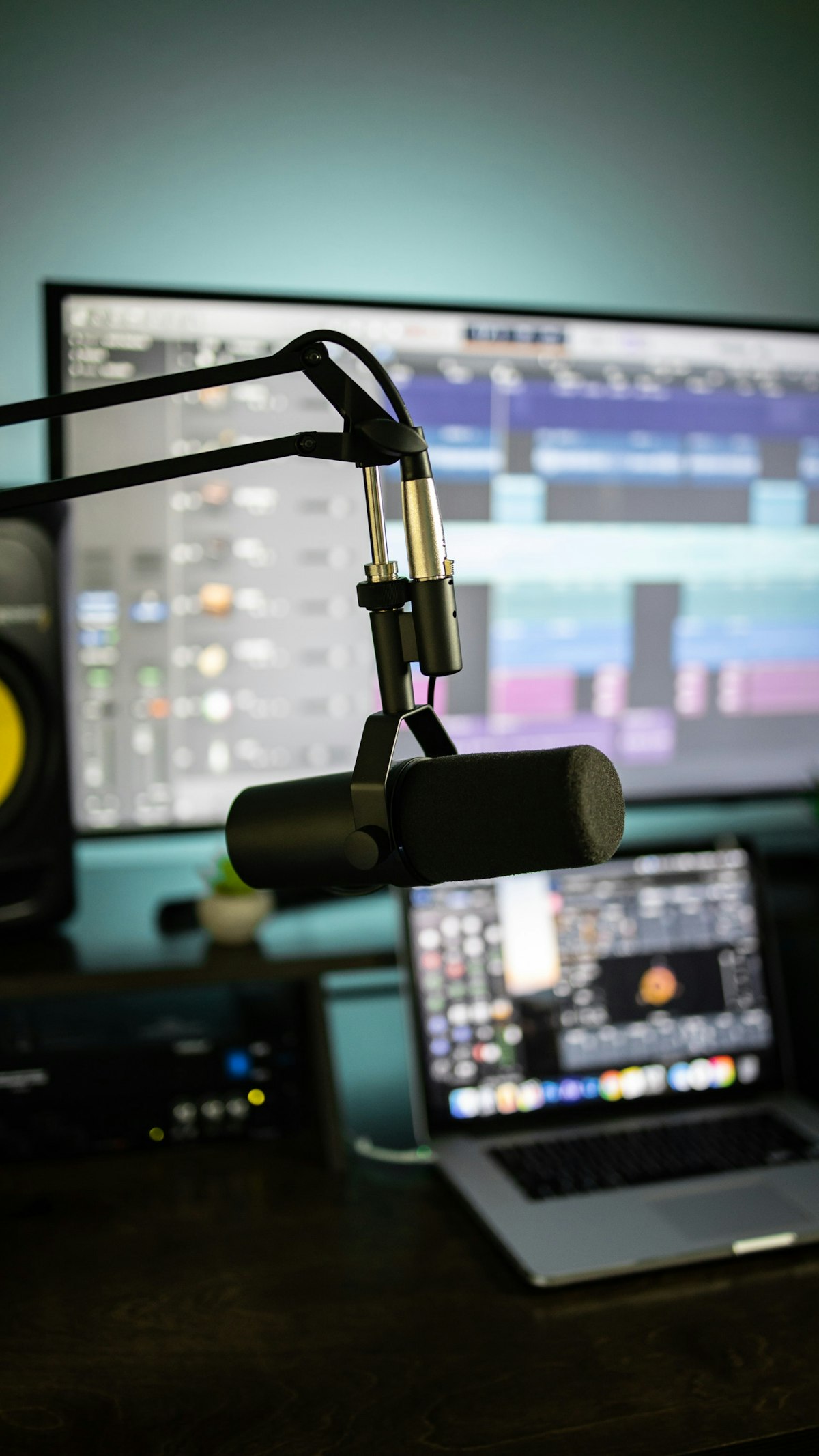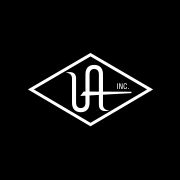It seems to take forever to find the right tools to get the job done. More often than not I end up back at the beginning of my search. It’s not until you make the entire journey through the sea of options that you begin to gain a better perspective on the very earliest of ideas.
Simplicity
That's my goal. I've seen studios with stacks of racks of doovalackies with big knobs and flashing LEDs. And mixing desks bigger than a football pitch. Mmm, I've got a theory on that one. But if I had all that gadgetry I'd never get anything done for I am an endless tweaker of knobs, sliders and settings.
So I set out to reduce my studio to the smallest footprint I could, where each component had multiple use cases. Tools that would help me make music, not hinder me. Tools that would inspire creativity.
DAW (Digital Audio Workstation) - Bitwig Studio

My DAW of choice is Bitwig Studio. For me, it does everything I need it to do and more. It does it in a good-looking, sleek and uncluttered UI. It’s fast and it’s modular. Workflow is exceptional. Once you learn to do something, you can pretty much bet that you can apply the same workflow pattern to everything else in your project. And you can connect almost anything to anything, and modulate anything you can think of using almost any other source in your system. As of writing, they have just released version 4 of the app. The main new feature is a wickedly refined workflow for comping. Comping is the process of combining multiple takes of an audio recording into a single polished instance, producing the best “comped” take possible. This process has been around in music studios for a very long time. It’s standard practice. It was possible to do it in earlier versions of Bitwig but the process was clunky. Bitwig, after all, started out with electronic musicians in mind, not standard audio music studios. But now, I couldn’t imagine a better comping workflow.
I previously used Apple Logic Pro X as a DAW, and from time to time, I do return to it if I have something particular in mind. But it has been gathering dust. Bitwig does it all. And for me, version 4 kind of seals the fate of Logic Pro. I used to mix and master in Logic Pro because that was what everyone said you have to do. But I manage to mix and master just fine in Bitwig without a hitch. In fact, I think it's easier. Logic has powerful but complex routing possibilities, but too often I found myself getting stuck in a tangle of software wires.
Audio Interface - Universal Audio Volt 476

I started off using an Apogee Duet (Firewire) and got tired of the tangle of unsightly dongles. Then for a long time, I was a Focusrite die-hard. I owned several of their products and loved them all. Very flexible routing options, very low latency and beautifully crystal-clear recordings. Then one day I decided to shrink down my toolbox to the meanest setup I could imagine. I was an avid user of a Maschine Mk3. One of the side benefits of this model of Maschine is that it has a studio-grade, 96kHz / 24-bit audio interface. I did some tests, and you know, I couldn't hear any difference between recordings made with my trusty Focusrite Scarlett 6i6 and those made with the Maschine Mk3. And as I never record more than two channels at once I decided the dual input of the Maschine was enough for me. So I eventually sold the Focusrite. Someone got a bargain. But for me, the Maschine has never missed a beat.
Until I heard the new Volt interfaces by Universal Audio. Ok, so maybe I didn't want super pristine recordings. Maybe I did want a bit of, mmm, let's say warmth. The 476 has an onboard compressor and and a "vintage" knob – oh, I am such a marketer's dream! But to my ears, it all sounds so gorgeous. Does that special something manage to cut through my less than stellar mixing and mastering efforts? I think so – some of that warmth is preserved and the end product is all the better for it.
External Audio Interface - Zoom H5
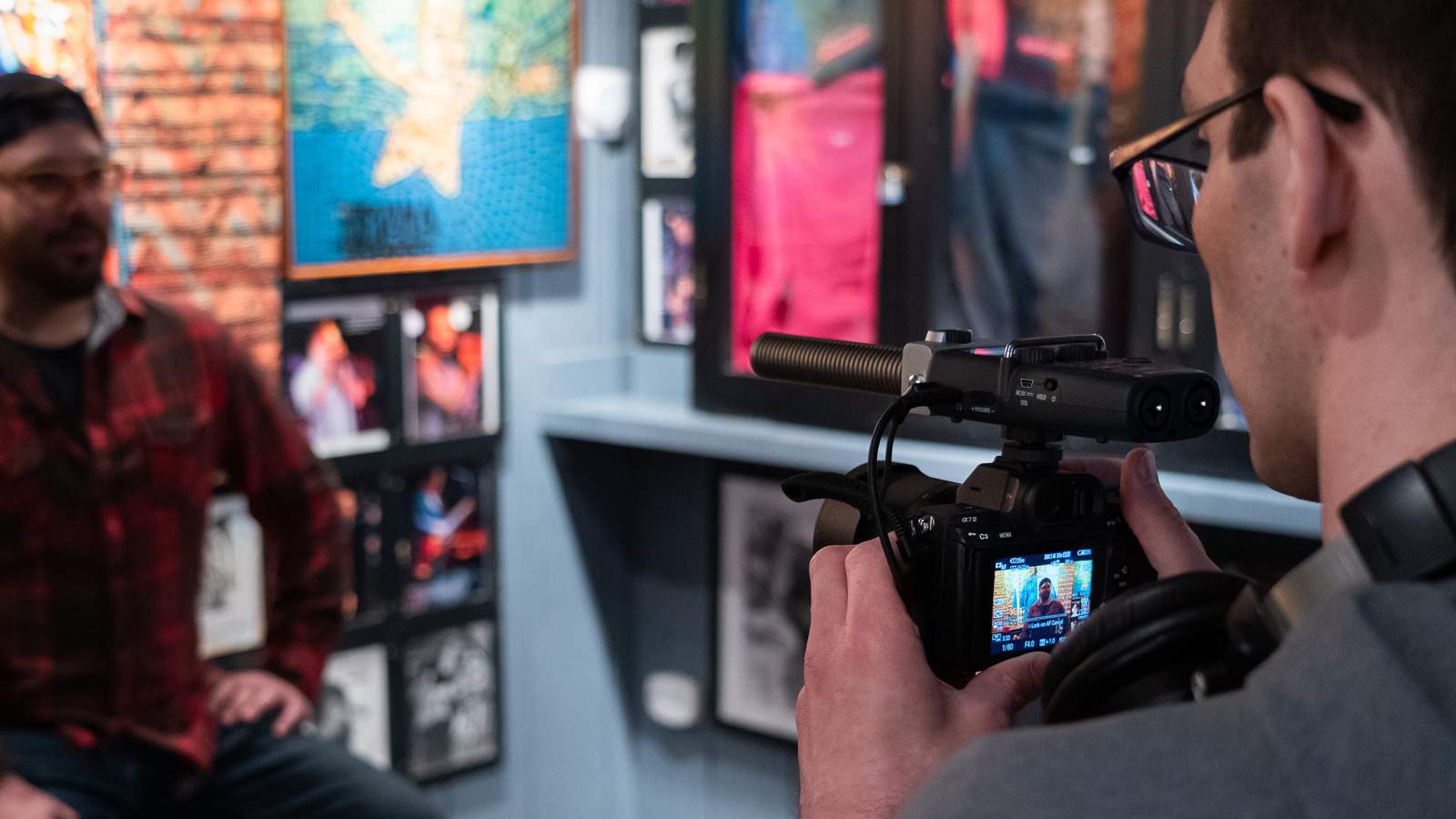
This bit of gear is a little swiss army knife. It makes excellent recordings away from the studio in 24-bit/96 kHz audio. It has a swappable microphone system or can take XLR input from dynamic mics and has phantom power to run condenser mics. This little gem can take up to 4 XLR audio inputs. And as it can be used as an audio interface, it can be used in the studio to extend the number of high-resolution inputs I have on the Maschine. It won't take direct input of passive guitars and basses. For that, you need to drop a mixer in between. But that's no big deal as a little go-anywhere 3 channel mixer does the job nicely.
Sampler/Drum Machine - Maschine Mk3
As already mentioned I use a Maschine Mk3. I use it as a sampler, my audio recording interface, a MIDI controller, a software controller for Bitwig and as a standalone MIDI drum machine controller. The Maschine comes with its own kind of DAW called Maschine but as I work with Bitwig I find myself using the Maschine software app less and just doing it all in Bitwig. But in every other respect it is so useful. It's the core of my studio. If it broke I'd have to go out and replace it tomorrow.
Listening - Monitors and Headphones
My set-up is simple. My little recording studio is only 18 square metres, so I get by with a pair of JBL Series 3 LSR305 monitors. I can hear clear across the spectrum and with a heavily treated room can hear the bass frequencies clearly.
I do my preliminary mix on a pair of Auratone 5C Super Sound Cubes driven by a Rotel amp. This gets me most of the way there to a clear, clean mix. I then finish the mix on the JBLs and use a pair of Sennheiser HD600 headphones to do final cross-checks. A couple of years ago I spent a great deal of time and a bit of money on sound-treating my studio with plenty of bass traps and acoustic tile treatment. And the difference was phenomenal. So my little JBLs get me by.
Microphones
- Rode NT1-A
- Shure SM58
- Audix OM5
Rode USB Podcasterdead!- Myers Grip
I feel guilty sometimes that I don't own a stable of thoroughbred microphones. Not a ribbon mic in sight. But for what I do, I get by. A good recording on an SM58 is far better than a bad recording on an expensive ribbon. Of course, I say that because I don't own a ribbon microphone. But so far my pocket is thanking me. And the Myers Grip — they call it The Tiny Giant — what a clever little fixer-upper that is. Stick it in a sound hole, a bass drum, attach it to an accordion. Always surprised by what it turns out.
Controllers
- Maschine Mk3
- Maschine Jam
- Nektar Impact LX88+ Keyboard
- Nektar Impact LX25+ Keyboard
- Roli Seaboard 49 Keyboard
- Expressive E Touche SE
- Redpipe Classic Electronic Bagpipe
- Presonus Faderport 16
- Roland Hansonic HPD-20
- Akai EWI5000
- Novation Launchpad Mk3
I use Maschine Mk3 and Maschine Jam as the hub of my set up. Linked together, they provide full off-screen control of Bitwig (Look Ma! No mouse!). Plus they provide the studio's audio interface and midi interface.
As of October 2020 I updated my mixing workflow to include a Presonus Faderport 16. I'm impressed with its tactile approach to mixing, automation and plugin parameter control. Yes, my Maschine could do all of this using Jürgen Moßgraber's fantastic DrivenByMoss controller script. But it was so abstract. So easy to lose track of where you were and what you were controlling at any point in time. The Faderport on the other hand is cool old school. It is always obvious where you are and what you are controlling. There is no abstraction. From the get go it was a breeze to use. And I already find myself mixing and automating almost without looking. Very natural. The added bonus is that my Maschine Mk3 has now been relegated to Maschine use only. And for those that know Maschine, that is not so much a relegation as a promotion. Happy music-making days ahead.
The Nektar keyboard is an 88 key MIDI keyboard. Nice action something like a weighted synth keyboard, but not like a weighted piano. But not being a pianist, it matters not to me. I like it. One of the main reasons I bought this keyboard is because it natively supports the control of Bitwig. This, alongside the Maschine, means that I can have off-screen control of Bitwig, even if I am using the Maschine for some other purpose. The 88 keys give me full access to any Kontakt instruments' key switches. Some of those amazing libraries seem to assume that everyone is sitting down at a baby grand! [Update] So happy with the Nektar 88 that I bought its little sibling, the Nektar LX25+, to have two octaves right at my finger tips on the mixing desk for quick little edits. So handy. [Update #2] How I missed having my 88 keys at my fingertips (thank you Kontakt). So yet another desk reshuffle and the 88 is front and centre again. Much, much better.
The Roli Seaboard is an amazing MIDI input device. It handles a superset of the MIDI protocol, called MPE. It captures five dimensions of touch. People who try it seem to be divided into two groups. You guessed it. Love it or hate it. I'm in the former.
The Seaboard is a renowned reinvention of the piano keyboard. Smooth, touch-responsive, and super-sensitive, its surface lets you bend, deepen, and modulate sounds in ways that make a standard keyboard feel two-dimensional. More musical expression is right at your fingertips — only on the Seaboard.
By way of novel ways of controlling MIDI instruments, the Touché SE heads in a different direction letting you make compound sounds using simple gestures. I must admit I have only had this piece of equipment for a short while and haven't used it yet in a production. But what fun awaits. You have to be really careful with this one, it's like hooking up a theremin to your favourite instrument of choice. Hours of noodling (nice, creative noodling) can go by before you realise where you are.

And what of the Redpipe bagpipe controller? This wee beastie has been in my music arsenal for the last 10 or so years. A clever invention by Rolf Jost. The instrument comes in many forms and is capable of being used as an instrument standalone or as a midi controller. The on board sound from the instrument is quite authentic and I have used it live in concert and with a bit of EQ tweaking gets the job done under hot lights where the temperature-sensitive tuning of an acoustic set of bagpipes might go haywire on you. For the studio however, I choose to use the Redpipe Classic in MIDI mode to drive one of two software instruments: Universal Piper and Studio Piper.
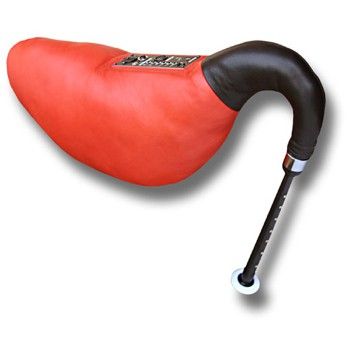
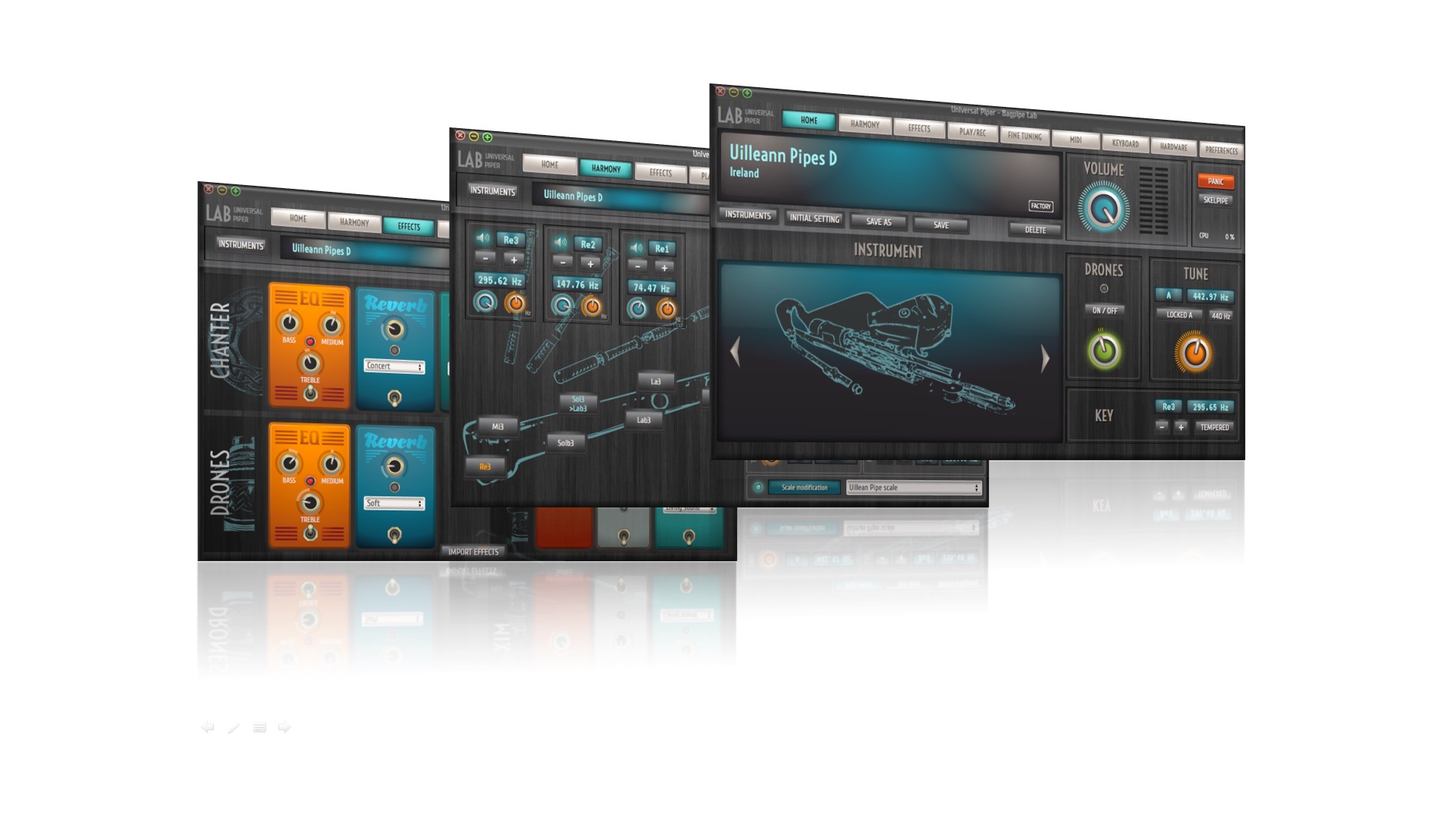

Both systems have their own merits and uses.
Whoa there! What about percussion? Drum roll please ... surely the electronic bagpipe would be incomplete without its partner in crime, the electronic drums? I got by for a while with an electronic drumkit in my studio. But it took up too much space and as much fun as it was my heart was never really in it. And to be honest my cephalopodic outbursts were a little rhythmically dyslexic. For some reason, at an early age, my hands and feet decided to do their damndest not to talk to each other — evidenced by my disjointed dancing technique and aversion to any kind of ball sport. But in the Digital Audio Workstation world, all I can say is, thank god for quantisation. However, the electronic drum kit was sold and I was left percussively naked.
But there was a saviour waiting in the wings. A number of years ago I played in a band that used a Roland HPD-10 HandSonic electronic hand drum. I remembered clearly that it was a godsend at the time for that particular band. And so I went on a hunt on GumTree for such a beast. The HPD-10 was a hard item to find secondhand. Testiment to its flexibility and usefulness, musicians were not giving them up lightly. So I had to go the new route. The HPD10 had been replaced by another couple of models. The latest HandSonic model is the HPD-20. And that's where I put down my coin. I was a little hesitant at first, only in the sense that any Scottish-born musician would be. But there was no need to fret. It turned out to be one of the best musical aquisitions I have ever made. Is there a drummer in the house? No, not exactly, but there is the next best thing — a two-handed drummer with no fumbling feet.
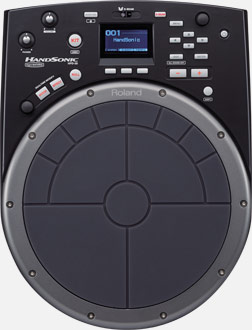
Software Instruments
These are the instruments that my MIDI controllers control. There are many different types, but I choose to use sampled instruments. Not loops or audio clips, but actual sampled recordings of instruments, note for note, strum by strum, hit by hit. And vocals too, solos and ensembles. The result sounds like the actual instrument playing because it is the actual instrument playing. Combined with creative input controls such as the Roli Seaboard, this puts a rich palate of unimaginable instruments right at your creative fingertips, literally.
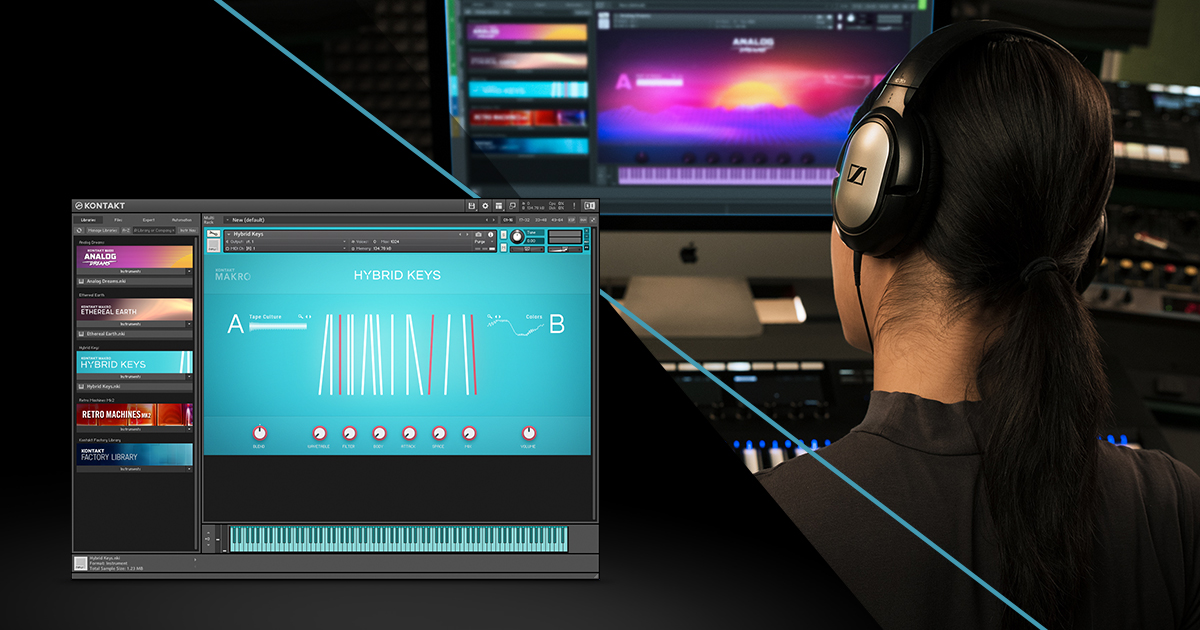
The hub of my MIDI ecosystem is the Native Instruments Kontakt 6 sampler. Very early on I chose to go with that one because most of the obscure instruments I had an interest in, many were sampled using the previous Kontakt 5 sampler. It's a decision I haven't regretted. Kontakt's support for rich, deep sampling, articulation scripting and round robins means that almost every performance can be made to sound very, very authentic. I've embraced the Native Instruments ecosystem but I have resisted buying into their Komplete library bundles, instead choosing to invest in hand-picked custom and boutique sample libraries on a case by case basis, in order to build a library of truly authentic instruments.
Mixing and Mastering
Bitwig, Logic Pro and indeed many other fine DAWs have enough plugins built into them to do all your own mixing and mastering in the DAW. But you really have to know what you're doing. You might have to tinker to the nth degree to get a really good result.
Early on I decided I wanted to use a suite of dedicated third party mixing and mastering plugins and stick with them. Learn to use a tool and make the most of it. Work within its limitations. Enjoy the benefits of third-party vendors who specialise in this area. Lastly, the suite would be DAW-agnostic. If I jumped ship on my DAW, which I did, the mixing and mastering tools I had learned would go with me. As they did.
I started out with Toontrack's EZmix and then moved to EZmix 2. I know a lot of people scoff at EZmix but really it turned out a good result for mere mortals like me. But everything always sounded like an approximation. You just didn't get the fine-grain control. I know I said didn't want to be tinkering to the nth degree but recording bagpipes in any form is so, so difficult.
So I struck out and after much research ended up jumping on the iZotope wagon. I started off with their elements bundle and soon found myself upgrading to the full Music Production Suite, thanks to an opportunistic Black Friday deal. I can't say enough good things about their products. The only downside is what appears to be their very aggressive approach to market gouging. Seriously, sometimes they make me go... ouch! But it's their company, their product and they can market it however they like.
So for mixing, I use iZotope Neutron.

I use Neutron on every track in a mix. I have used the Mix Assistant many times, but have never been happy with the result and every time I ended up abandoning the mix and using my own ears. But their presets are a great starting point. Their tone-shaping tools are just awesome and all the modules "talk to each other". Yay, happy times.
For mastering, I use iZotope Ozone.

The big bad black hat world of mastering becomes just a tad more approachable with this wonderful plugin. The plugin is a monster, but then it is out to catch an even bigger monster — mastering. I won't lie, this is not a plug and play option. But all the tools are there to turn out a decent master if you have patience and are willing to learn. And there is a lot to learn. I have had better results with the Ozone Mastering Assistant than I have with Neutron's Mix Assistant. But once again, it generally only provides a kick-off point. It's up to your ears and a little bit of experience to get what you are after. The mastering modules are all very useful, and they talk to each other. And, drum roll please, the mastering modules talk to the Neutron mix modules. This really makes for a powerful system that tries to help you not make bad decisions. My favourite module in the Ozone suite is by far the Tonal Balance Control. I don't think I would like to attempt mastering without it.

I didn't realise how heavily I relied on this module prior to upgrading my studio's acoustic treatment. For someone mastering in a bad room, this is a must. But now that my studio has had a good treatment, this module really shines as my brain doesn't fight between what I am seeing in the Tonal Balance Control and what I am hearing in my monitors. Tonal Balance Control + Treated Sound Room = Faster Mastering. Much faster. And that gets a better result.
Speed in mixing and mastering, within reason, is essential. Auditory fatigue sets in very quickly and before you know it you are suffering from acoustic blindness. Both Neutron and Ozone help combat this by allowing me to work relatively quickly.
Computer System
And what of computers? Well, the world of music production is changing and many vendors are thankfully supporting software across Mac, Windows and Linux. So I don't think which system you use matters so much any more. For what it is worth I am on macOS. Have been there in one form or another since around... oh, dear, a long time. Have used Windows and Linux at work and at play. But Mac is where my creative heart is.
The most powerful computer is the one that people actually use.
Not sure who said that. Might have been Steve Jobs or it might have been some marketing guru from Apple. But even that is about to change. I'm awaiting delivery of a Purple M1 iMac 24" (2021). Yes, you saw that right. The word purple in the middle of a sentence has a capital P. And so it should.
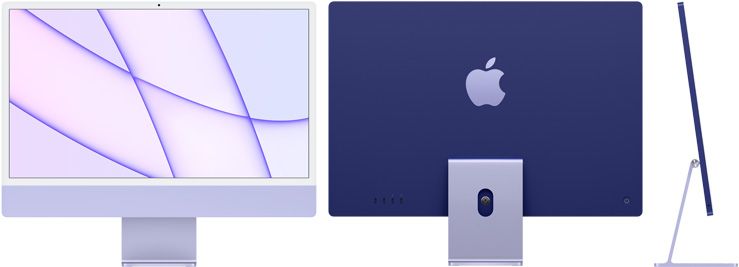
The most powerful computer is the one that people fall in love with.
I'm pretty sure I know who said that!
Apple are on the giant market-capturing move again. Perhaps for the first time since the passing of Steve Jobs.
Truth be told the Purple iMac is not bound for the music studio. It's for another purpose. The music studio currently runs of a spec'd up 16" MacBook Pro running in clamshell mode. And this is where my simplicity theory fails a bit. Due to my poor eyesight I have fallen into using large format screens in recent years. Then I walked into a store one day and saw a bunch of FFalcon 50" UHD flat screens going out the door for the silliest of prices. I just had to have one. It now hangs gloriously above the music studio workbench. For it is a workbench I work at, and stand at. No chair. But that's a subject for another blog post I think. But that big screen — it really works, it inspires, it gives you immediate and intimate access to the music you are creating. Like plunging your hand into a big bucket of molten notes.
